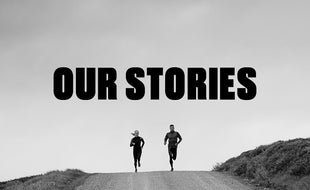Sculpt Your Best Self With Lower Body Workouts
The journey to a stronger, more sculpted physique often starts from the ground up — literally. Lower body workouts aren't just about achieving toned legs, but they're also foundational to overall health, stability, and body functionality. From supporting the spine to aiding in efficient movement, the muscles in our lower body are paramount.
In this guide, we'll delve deep into the essence of lower body workouts, the crucial muscle groups involved, and why it's a segment of fitness that deserves everyone's undivided attention.
Why Focus on the Lower Body?
For many, the lure of upper body workouts — chiseled arms, broad shoulders, and a defined chest — often overshadows the essential role the lower body plays in our overall physique and health.
But let's understand why it's indispensable:
-
Foundation of Strength: The legs and glutes are the most substantial muscle groups in the human body. Strengthening them can provide a solid base for every other activity, be it lifting, running, or even simple day-to-day chores.
-
Back Health & Posture: A robust lower body directly impacts our posture. Weak glutes and tight hip flexors can lead to lower back pain and misalignment in our spine, making consistent lower body workouts a preventive measure against such issues.
-
Metabolic Boost: Due to their size, lower body muscles can burn a significant amount of calories during workouts. This metabolic boost not only aids in weight loss but also promotes muscle growth and overall fitness.
-
Enhanced Athleticism: Whether you're an athlete or someone who simply loves their weekend hikes or jogs, a strong lower body enhances athletic performance. It provides the necessary power and endurance for activities like sprinting, jumping, or even steady long-distance running.
-
Balance & Stability: Our legs and core work in tandem to provide balance and stability. Strengthening the lower body can prevent falls, especially in older adults, and offer a stable base for all kinds of movements.
While a well-rounded fitness regime would never undermine the importance of any body part, focusing on the lower body offers multifaceted benefits, both functional and aesthetic. As we proceed, you'll learn how to train this part effectively, ensuring a harmonious blend of power and grace in every step you take.
Anatomy of the Lower Body
Understanding the anatomy of the lower body is crucial for effective training. By identifying the primary muscles and their functions, we can tailor our workouts for optimal results.
-
Glutes: Often referred to as the powerhouse of the lower body, the glutes comprise three muscles: the gluteus maximus, medius, and minimus. They play a pivotal role in hip extension, abduction, external rotation, and stabilization.
-
Quadriceps: The quads are a group of four muscles located at the front of the thigh responsible for extending the knee and assisting in hip flexion.
-
Hamstrings: These three muscles at the back of the thigh work opposite the quads, aiding in knee flexion and hip extension.
-
Calves: The calves, made up of the gastrocnemius and soleus, are essential for plantarflexing the foot — think of the motion during tiptoeing or pushing off during a sprint.
-
Adductors: These muscles in the inner thigh are responsible for pulling the legs inwards or adducting them.
-
Hip Flexors: These are a group of muscles, including the psoas and iliacus, crucial for flexing the hip or drawing the knee upward.
-
Tibialis Anterior: Located in the shin, this muscle dorsiflexes the foot, allowing us to clear the ground during walking or running.
Understanding this intricate network of muscles helps in choosing exercises that target each area effectively. Knowledge about their functions ensures we're engaging them correctly during workouts, leading to better results and minimizing the risk of injuries.
Benefits of a Strong Lower Body
Strengthening the lower body offers an array of benefits, transcending mere aesthetics. A sculpted lower body is often the visible outcome of consistent training, but the advantages run deeper:
Improved Daily Functionality
Our legs are the pillars of our daily activities. Simple tasks like standing, walking, climbing stairs, or even sitting require the involvement of our lower body muscles.
With a stronger base, activities such as carrying groceries, squatting to pick up items, or chasing after a bus become much more manageable. The power derived from toned legs and hips can make daily life feel effortless and more efficient.
Boosted Metabolism
The lower body houses some of the largest muscle groups. When we engage them through exercise, the energy required is substantial. This increased demand can significantly enhance one's metabolic rate, facilitating faster calorie burn during and after a workout and even contributing to effective muscle building.
Reduced Risk of Injuries
A fortified lower body ensures that our joints, especially the knees, hips, and ankles, are well-supported and stabilized. This foundational strength can significantly decrease the chances of strains, sprains, and other injuries, which might arise from weak or imbalanced muscles.
Enhanced Athletic Performance
For athletes or recreational sports enthusiasts, a powerful lower body is non-negotiable. It's pivotal for running faster, jumping higher, and showing agility in sports ranging from football and basketball to tennis and athletics. Even in activities like cycling, swimming, or skiing, lower body strength plays a crucial role in optimizing performance.
Better Balance and Coordination
Strength in the lower body directly impacts our balance and spatial coordination. Especially as we age, maintaining balance can become a challenge. Regular lower body training enhances our stability, agility, and overall proprioception, reducing the risk of accidental falls or missteps.
Optimized Weight Distribution
With a strong lower half, our body's weight distribution becomes more balanced, ensuring no undue stress is placed on any particular joint or muscle group. This balanced distribution is key to maintaining a healthy posture, reducing the chances of back or neck pains.
Increased Bone Density
Engaging in weight-bearing exercises, a staple in lower-body workouts, is crucial for increasing bone density. This strengthening of the bones is essential in preventing degenerative conditions like osteoporosis, especially as one progresses in age.
Mental Health Boost
Physical achievements — hitting a new squat record or mastering a challenging lower body exercise — can provide immense satisfaction. This boosts self-esteem and releases endorphins — the body's natural mood elevators. Regular lower body training can be a potent tool against feelings of stress and sadness.
Key Components of Effective Lower Body Training
Crafting a successful lower-body workout entails more than merely lifting heavy weights or performing countless squats. It's about the synergy of various components that cater to both strength and flexibility.
Here are the critical elements of a well-rounded lower body regimen:
-
Variety of Movements: The lower body isn't just about the quads or hamstrings. Incorporating a diverse range of exercises ensures that you target every muscle, from the major ones like the glutes and quads to the often-overlooked ones like the adductors. Switching between compound exercises like deadlifts and isolation movements like leg curls can ensure comprehensive muscle growth and strength.
-
Proper Warm-Up: Before delving into your workout, it's paramount to prime your muscles with a thorough warm-up. Doing so prepares your body for the upcoming strain and significantly reduces the risk of injuries. Our Core Compression Tights can be an excellent asset during this phase, optimizing blood flow and supporting muscle groups as you begin your routine.
-
Progressive Overload: To witness consistent muscle growth and strength improvements, it's vital to gradually increase the resistance or repetitions in your exercises. Whether using dumbbells, kettlebells, or resistance bands, ensure you're challenging your muscles without compromising on form.
-
Incorporate Plyometrics: Plyometrics, such as jump squats or box jumps, are explosive movements that can boost power, agility, and muscular endurance in the lower body. They're especially beneficial for athletes or individuals looking to improve their functional fitness.
-
Flexibility and Mobility Work: As much as strength is essential, so is ensuring that your lower body has a broad range of motion. Incorporating exercises focusing on flexibility and mobility can aid muscle recovery and reduce post-workout stiffness. Wearing our Recovery Compression Tights post-training can further enhance this process, offering targeted muscle support and promoting faster recovery.
-
Consistent Rest and Recovery: Training hard is only one side of the coin. Giving your muscles ample time to recover is equally crucial. Overworking can lead to fatigue and injuries and hinder muscle growth. Remember, it's during the recovery phase that muscles repair and grow. And our Refresh Recovery Compression Tights are engineered to support this process, ensuring you’re ready for your next training session.
-
Nutrition and Hydration: Fueling your body with the right nutrients, especially post-workout, aids in muscle recovery and growth. Staying hydrated is equally vital, as even slight dehydration can impact performance and recovery.
-
Periodization: This involves breaking down your training routine into specific periods, each with a focus, be it muscle-building, strength, or endurance. It helps keep the workout regimen balanced, diverse, and tailored to specific goals.
When all these components are in harmony, lower body training becomes not just about building muscle but sculpting a healthier, more functional, and resilient version of oneself. And with aids like our Core Compression Shorts and Recovery Flex Leg Sleeves, you're equipped to get the most out of every workout.
Sample Lower Body Workout Routines
The lower body, a powerhouse of strength and agility, requires targeted exercises to sculpt and tone effectively. Let's dive into some sample routines that range from beginner to advanced, ensuring everyone can embark on their journey of building a more robust, more resilient lower body.
Beginner Lower Body Routine:
-
Bodyweight Squats (three sets of 12 reps): Stand with your feet hip-width apart, push your hips back, and lower your body as if sitting in a chair. Keep your upper back straight and knees behind your toes.
-
Glute Bridge (three sets of 10): Lie on your back with your knees bent. Lift your hips off the ground, squeezing the glutes at the top.
-
Step Up(three sets of 10 per leg): Using a bench, step up with the right foot, bringing the left knee to a 90-degree angle. Switch legs.
Wearing compression gear during these exercises can support proper form and soothe any strain or discomfort. They're especially beneficial for beginners still mastering the correct starting position for various movements.
Intermediate Lower Body Workout
-
Goblet Squat(three sets of 12): Hold a dumbbell or kettlebell close to your chest. With feet shoulder-width apart, squat down, keeping your elbows inside your knees.
-
Bulgarian Split Squat (three sets of eight per leg): Place the right foot on a bench behind you and lunge with the left leg. Switch sides.
-
Romanian Deadlift(three sets of 10): Holding a barbell or pair of dumbbells, keep a slight bend in the knees and hinge from the hips, lowering the weights just past the knees, targeting hamstrings and glutes.
Advanced Lower Body Blast
-
Front Squat(four sets of eight): Hold a barbell in front of you at shoulder height. Squat down, maintaining an upright torso.
-
Single-Leg Deadlift(three sets of eight per leg): Holding a weight in the right hand, stand on the left foot and hinge forward, lifting the right leg back.
-
Lateral Lunge With Resistance Band (three sets of 10 per side): Place a resistance band around your thighs and take a big step to the left, lunging side to side.
End your routines with a cardio blast like jumping jacks or high knees to elevate the heart rate and maximize calorie burn. And don't forget your post-workout recovery.
Our Refresh Recovery Compression Tights support muscle recovery, making it a staple for those leg days when every muscle group feels engaged. This ensures you're ready for the next workout, be it a full-body session or another lower-body strength training day.
A Final Word
Empowering your journey to a stronger, more sculpted lower body is about more than just exercises — it's about dedication, techniques, and tools that support you.
At 2XU, we're committed to being a part of your fitness narrative. With our compression gear designed for performance and recovery, you can train hard, recover fast, and set new benchmarks. Let every rep, lunge, and squat count.
Here's to sculpting your best self!
Sources:
Anatomy, Bony Pelvis and Lower Limb: Leg Bones - StatPearls | NCBI Bookshelf
5 Benefits of Strength Training | American Cancer Society
The real-world benefits of strengthening your core | Harvard Health



